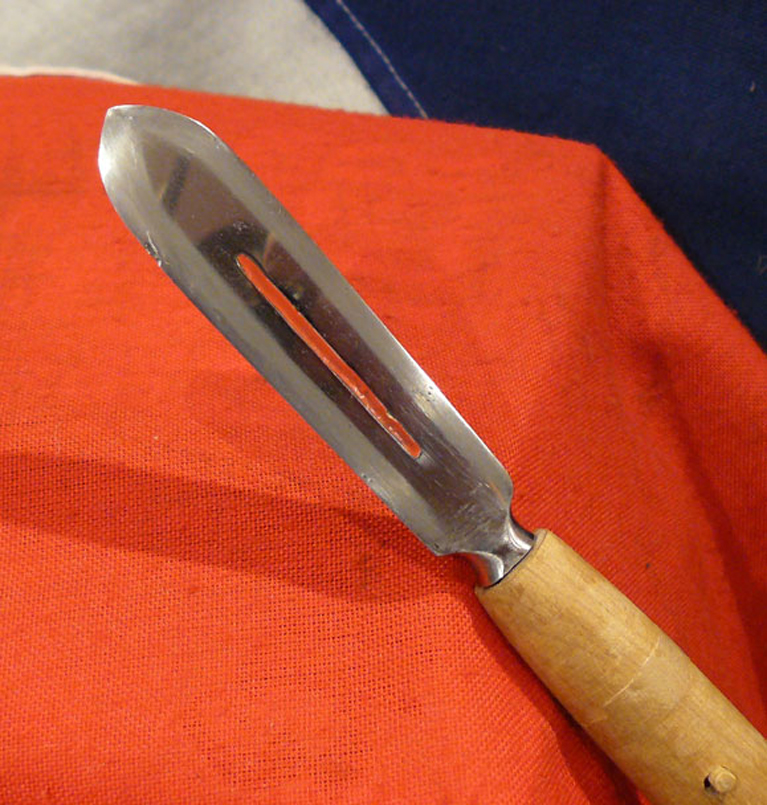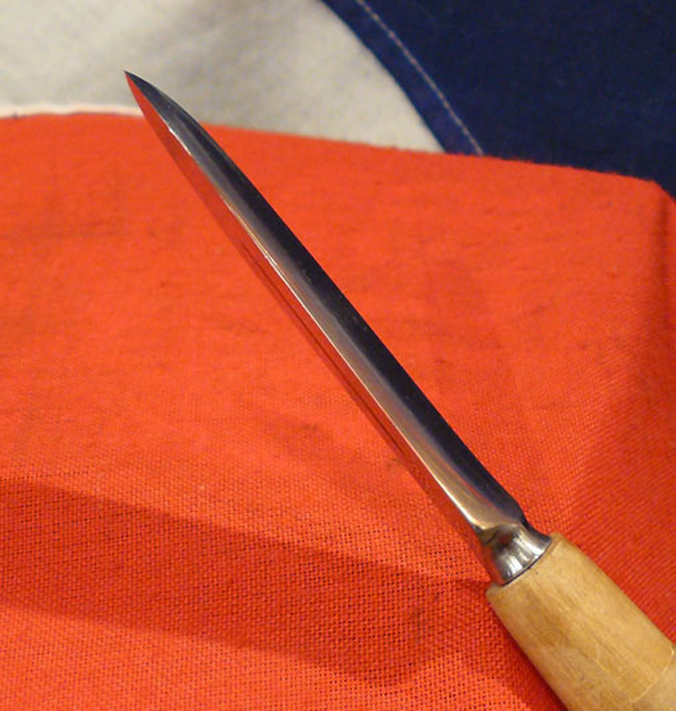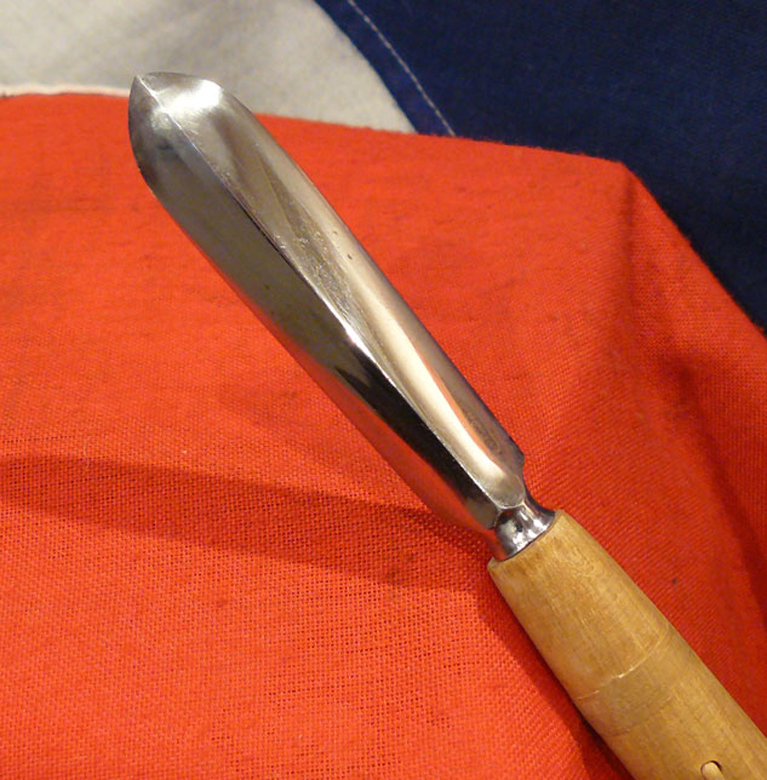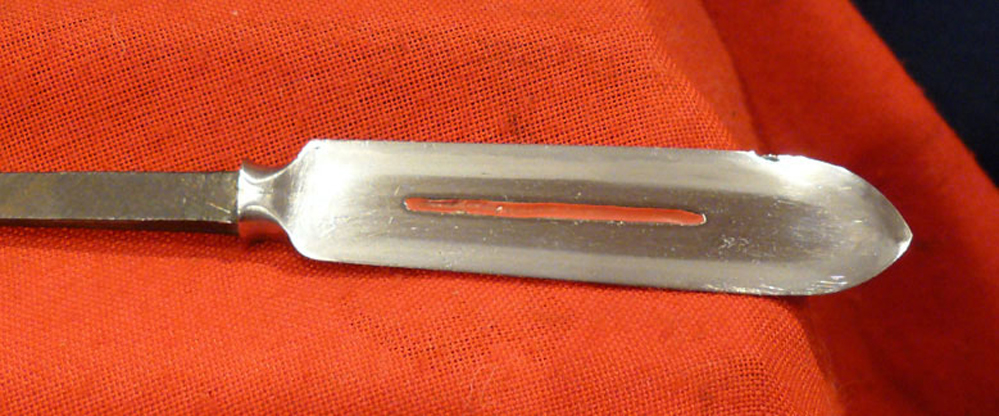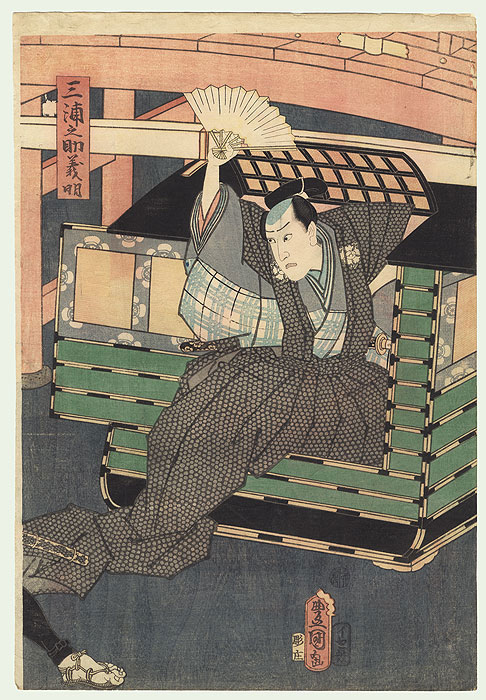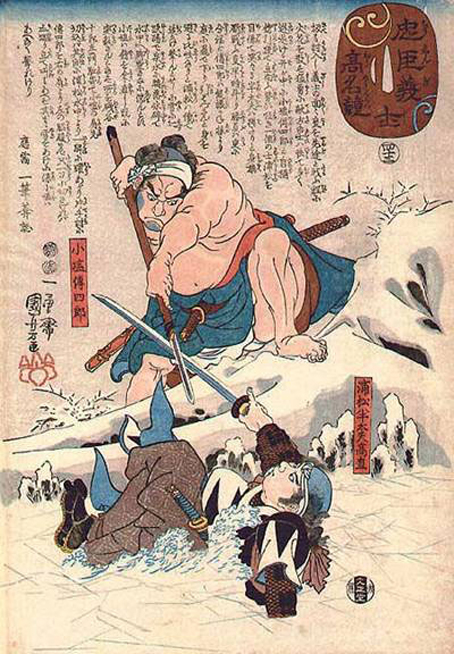A Most Inexpensive Original Antique Samurai Weapon Shinto Samurai Sankaku su Yari Polearm Spear, As used as Kago Yari
Edo period 1598 to 1863. The small kago sankaku yari, was a yari [spear], mounted on a short stabbing pole, and, possibly kept in a palanquin, within a small rack, that could be accessed instantly to defend the person carried within the palanquin [whether it be a daimyo or high ranking samurai for example] from an outside attacker attempting to harm or rob them. Extremely effective and efficient when used in the trained hands of an exponent of yari combat. Nice polish, Edo era, single small edge nick [see photo]. Set in plain traditional wood haft . A small three side bladed yari as could typically be mounted as kago yari. Picture in the gallery depicting a Samurai coming out from his palanquin when facing an assailant, his left hand is obscured for him to reach the kaga yari concealed in it's rack inside Samurai Emerging from a Palanquin by Toyokuni III/Kunisada (1786 - 1864)
A yari once mounted on its haft can range in length from one metre to upwards of six metres (3.3 to 20 feet). The longer versions were called omi no yari while shorter ones were known as mochi yari or tae yari. The longest versions were carried by foot troops (ashigaru), while samurai usually carried a shorter yari such as this example. Yari are believed to have been derived from Chinese spears, and while they were present in early Japan's history they did not become popular until the thirteenth century.The original warfare of the bushi was not a thing for "commoners"; it was a ritualized combat usually between two warriors who may challenge each other via horseback archery and sword duels. However, the attempted Mongol invasions of Japan in 1274 and 1281 changed Japanese weaponry and warfare. The Mongol-employed Chinese and Korean footmen wielded long pikes, fought in tight formation, and moved in large units to stave off cavalry. Polearms (including naginata and yari) were of much greater military use than swords, due to their much greater range, their lesser weight per unit length (though overall a polearm would be fairly hefty), and their great piercing ability. Swords in a full battle situation were therefore relegated to emergency sidearm status from the Heian through the Muromachi periods. Around later half of sixteenth century, ashigaru holding pikes (naga yari) with length of 4.5 to 6.5 m (15 to 22 feet) or sometimes 10 m became main forces in armies. They formed lines, combined with harquebusiers and short spearmen. Pikemen formed two or three row of line, and were forced to move up and down their pikes in unison under the command.Yari overtook the popularity of the daikyu for the samurai, and foot troops (ashigaru) used them extensively as well
Various types of yari points or blades existed. The most common blade was a straight, flat, design that resembles a straight-bladed double edged dagger. This type of blade could cut as well as stab and was sharpened like a razor edge. Though yari is a catchall for spear, it is usually distinguished between kama yari, which have additional horizontal blades, and simple su yari (choku-so) or straight spears. Yari can also be distinguished by the types of blade cross section: the triangular sections were called sankaku yari and the diamond sections were called ryo-shinogi yari. 3.8 inch head overall 29 inches with wood haft
Code: 22683

